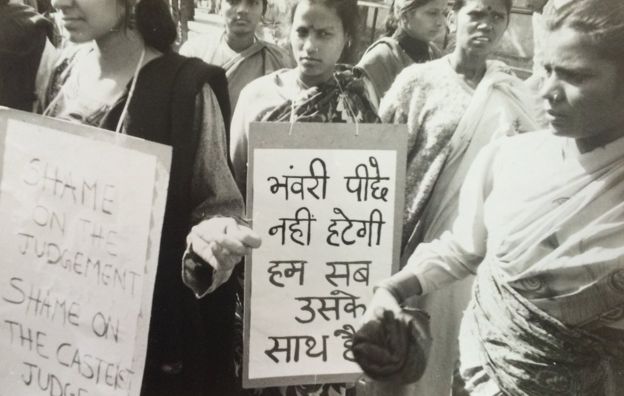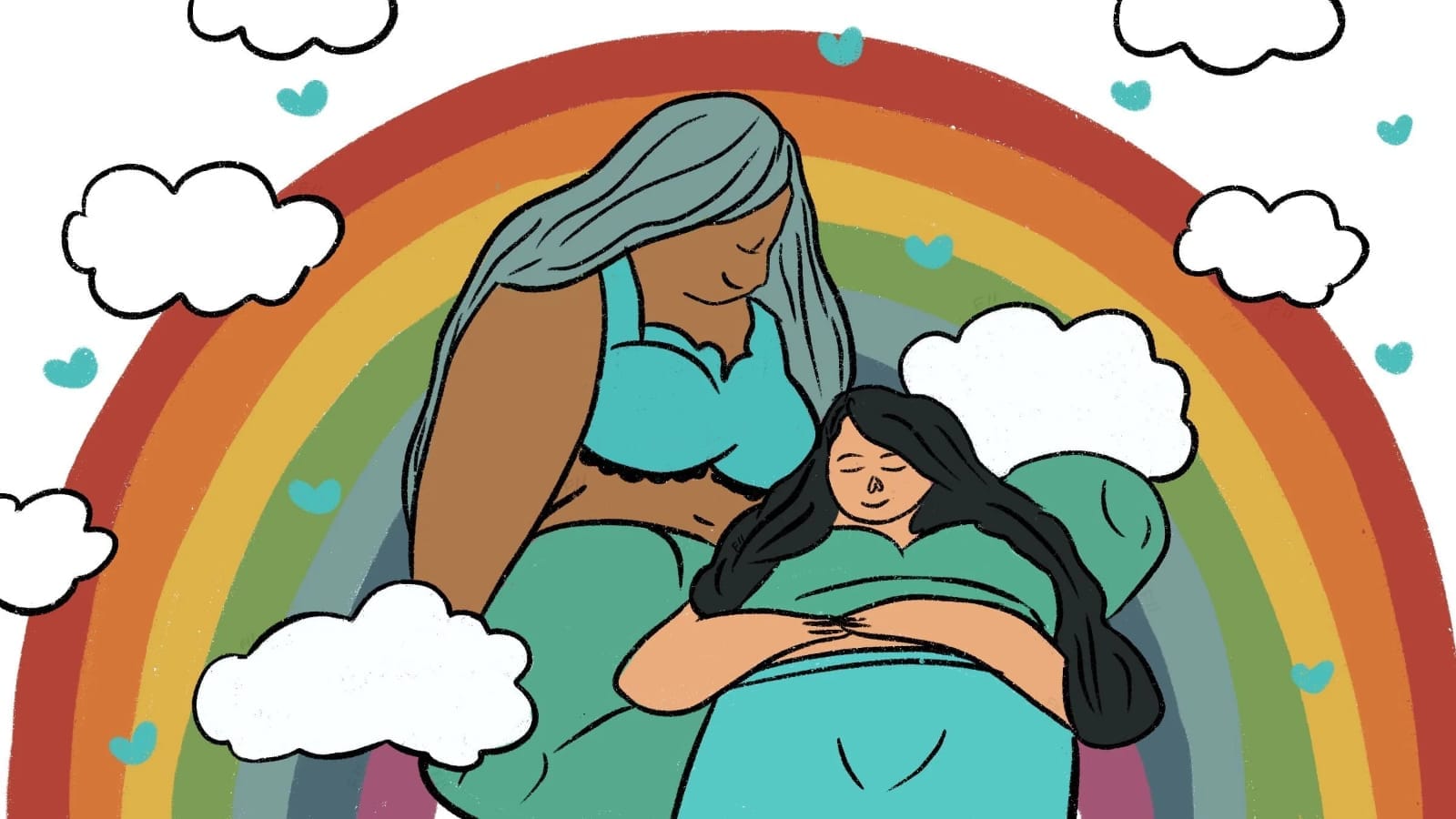Read the first part here: A Brief Summary Of The First Wave Of Feminism and the second part here: A Brief Summary Of The Second Wave Of Feminism.
As feminism has evolved, it has branched out into different areas of discourse. It has become more difficult to define a wave and demarcate a time period within which activity is occurring.
Feminist thought and culture have become increasingly present around the world, with it adapting to a variety of circumstances. It is easier to narrate the suffrage struggle for the vote, and the second wave’s push for the ERA than it is to define the Third Wave, a more recent and broad surge of feminist activity.
To understand the Third Wave, we must first understand the USA post the second wave ‘sex wars.’ The ‘sex wars’ was the name given to the open debate between groups within feminism over pornography and sexual activity. Anti-pornography feminists wanted to limit the porn industry because they believed it catered only to men and encouraged violence towards women. They wanted to end prostitution and saw it as a worst-case scenario for any woman.

Sex-positive feminists, on the other hand, argued that sexual liberation was a vital component of equality for women and that banning pornography was repressive and undemocratic. They believed that there were women who chose sex work that had to be accounted for.
The Third Wave of feminism began in a generation that had grown up with feminism and as such took the hard-earned accomplishments of the First and Second wave for granted. Third Wave feminists were quick to criticize earlier feminists, and to point out the flaws in their movements.
An argument often made was of the exclusive nature of the movements, and the marginalization of minorities in the mainstream. The Third Wave thus primarily tried to bring in communities that were previously left out of feminist goals and recognize the intersectionality of oppression. It focused on race and gender and grew out of the sex-positive debates of the second wave.
It is often demarcated as beginning in 1991 with Anita Hill accusing Supreme Court nominee Clarence Thomas of sexual harassment. Both parties were African American, and Thomas was seen as a popular candidate for the nomination due to the need for African American presence in the Supreme Court. Hill came forward in front of the all-white male Senate, and Thomas retaliated by denying everything and claiming to be a victim of a “high-tech lynching”.

Hill was faced with tremendous backlash and her character was attacked instead of her testimony being believed. Her trial had been televised, and the sight of a black woman reporting the harassment to the clearly far from inclusive Senate impacted women all over America.
Despite Hill’s accusations, Thomas was confirmed. In response to this, Rebecca Walker published a piece in Ms Magazine, founded by Gloria Steinem, supporting Hill and heralding the beginning of the Third Wave. She famously wrote, “I am not a post-feminism feminist. I am the third wave.”
In the 1990s, there was a great deal of improvement in political representation and equality for women. By 1993, 5 women had joined the US Senate, and 1991 was often called the ‘Year of the Woman’.

The first female Attorney General and first female Secretary of State took office. Hilary Clinton gave her famous ‘Women’s Rights are Human Rights’ speech at the UN in 1995, and Ruth Bader Ginsburg became the second woman in the Supreme Court in 1993.
The Family Medical Leave Act which allowed employees to take unpaid leave for family and medical emergencies became law in 1993. The Violence Against Women Act which improved justice for women who faced abuse was passed in 1995. These were significant achievements for the Third Wave and landmark decisions in US history.
The Third Wave of feminism was greatly focused on reproductive rights for women. Feminists advocated for a woman’s right to make her own choices about her body and stated that it was a basic right to have access to birth control and abortion.
When the Supreme Court upheld the Partial Birth Abortion Ban Act and restrictions on abortion, there was a huge protest march called the ‘March for Women’s Lives’ in Washington DC in 2004. Attended by activists, Second and Third Wave feminists and celebrities, the march showed how important the issue of reproductive rights was to the Third Wave. The Act was not repealed, and methods of limiting access to abortion such as parental or spousal consent continued.
The Third Wave is different from the First and Second Waves as it spread further into pop culture and media, and laid emphasis on the voices of the young. Girl bands such as Riot Grrrl spread messages of female empowerment through punk rock and started discussions of patriarchy and body image amongst teenagers listening to their music.
The Vagina Monologues by Eve Ensler became a national hit and controversy, and expanded dialogue on violence against women. The BUST magazine began publishing in 1993 and added a feminist presence in the press.
Movies and television shows impacted the narrative of the Third Wave, such as Thelma and Louise, Buffy the Vampire Slayer, 30 Rock and Parks and Recreation. Strong female feminist characters became more common when adolescent girls became a powerful demographic in media and a generation of girls grew up in a completely different feminist environment than their mothers.
The Third Wave was concerned with reclaiming terms used to oppress or label women by the patriarchy and use them as tools of liberation. Terms like “bitch”, “slut”, “cunt”, were embraced and claimed by feminists. The book Bitch: In Praise of Difficult Women by Elizabeth Wurtzel published in 1999 is just one example of this.
Another is the reclaiming of ‘slut’ with the inception of SlutWalks. The idea was to send a message about the justification of rape by referring to a woman’s clothing and appearance, and rape culture as a whole.
These walks received widespread support but also criticism for being counter-productive and detrimental to the feminist cause. While it seems appealing to strip these words of power over women, the long history of their violent and derogatory connotations should not be trivialised in the process.
Trans feminism was brought more into the mainstream in the Third Wave. The rights of trans persons were not included in feminism till recently and the need to acknowledge the legitimacy of their concerns was pressing. The discussions of gender, body image and sexuality that defined the Third Wave of feminism made it more inclusive to trans feminists. Even today there is ignorance among large sections of society about the identity of trans persons, but the Third Wave was important in taking the first steps towards educating others.
In India, the enfranchisement of women and equality by law were given at Independence. However, deep-rooted cultural and religious beliefs prevented the materialisation of dreams of gender equality post British-rule. Implementation of the law was weak, and social evils and injustices were still largely unregulated.
The 1980s and 90s were characterised by national protests against rapes which polarised society and confronted hypocrisies entrenched in the mindsets of many Indians. Debates over a woman’s culpability in her own rape and the prevention of rape by curtailing the movement of women were frequent. Cases such as those of Hetal Parekh, Bhanwari Devi, and Pratibha Murthy triggered demonstrations across the country which resulted in legal victories for Indian women’s groups.

Women’s representation in politics did improve, with Mayawati becoming the first Scheduled Caste Chief Minister in 1995 and Sonia Gandhi the first female Leader of the Opposition in 1999. Pratibha Patil became the first female President of India in 2007 and Meira Kumar the first female Speaker of the Lok Sabha in 2009.
Despite these improvements, women in India still faced many issues such as unavailability of education, little right to property, domestic violence and sexual harassment to name only a few. There have been crucial changes to Indian law and politics but the issues of women from a variety of backgrounds still have to be resolved.
While the notion of “feminism” was derived from the West, India has had a long history of women’s movements throughout its history. Today’s Indian feminism can only be effective if it is informed by the unique historical and geographical experiences of Indian women and does not replicate the activity of the West.
From being too radical to disrespecting the work of its predecessors, the Third Wave of feminism has faced criticism on many fronts. It was less united than the First and Second Waves. It’s goals less clear and causes more disputed. The very need for feminism in the 21st century itself was called into question.
However, it’s effect on societal perceptions and expectations from women was crucial in bringing them closer to equality in more spheres than ever before. The wave is said to have ended in 2012 when the social media-centered ‘Fourth Wave’ began.
Today, it’s even more difficult to trace the narrative of feminism as it develops to tackle various conditions. Today’s feminists have an obligation to learn about those who shaped the world they live in as well as acknowledge those who have been marginalised in the past, for their work is still essential and feminism has a long way to go.
References:
Also read in Hindi: थर्ड वेव ऑफ फेमिनिज़म : नारीवादी आंदोलन की तीसरी लहर का इतिहास
Author’s note: This piece focuses on the Third Wave of feminism in the USA. The author acknowledges the exceptional contributions and achievements of feminists around the globe and has consciously limited the scope of the article.
Featured Image Credit: Vice
About the author(s)
A student at Ashoka University, Tara loves poetry, impassioned conversation and brewing warm cups of tea.





a very precious and informative article. thanks for enhancing my knowledge me. ?